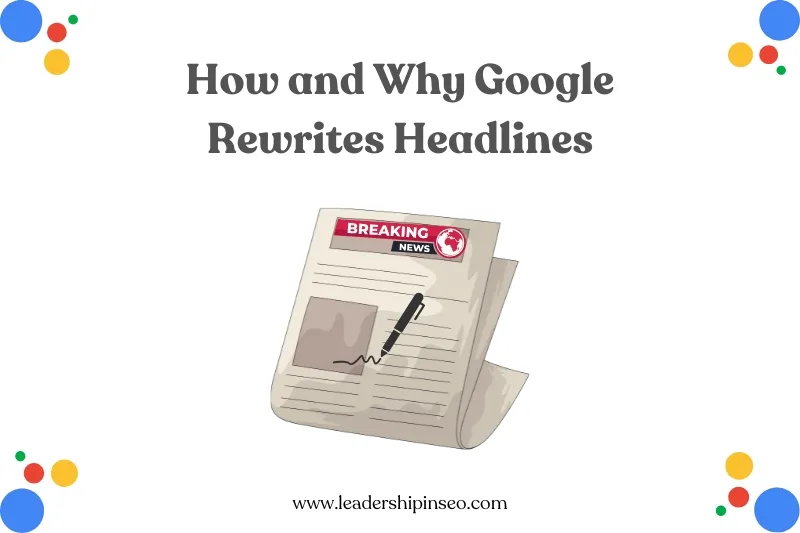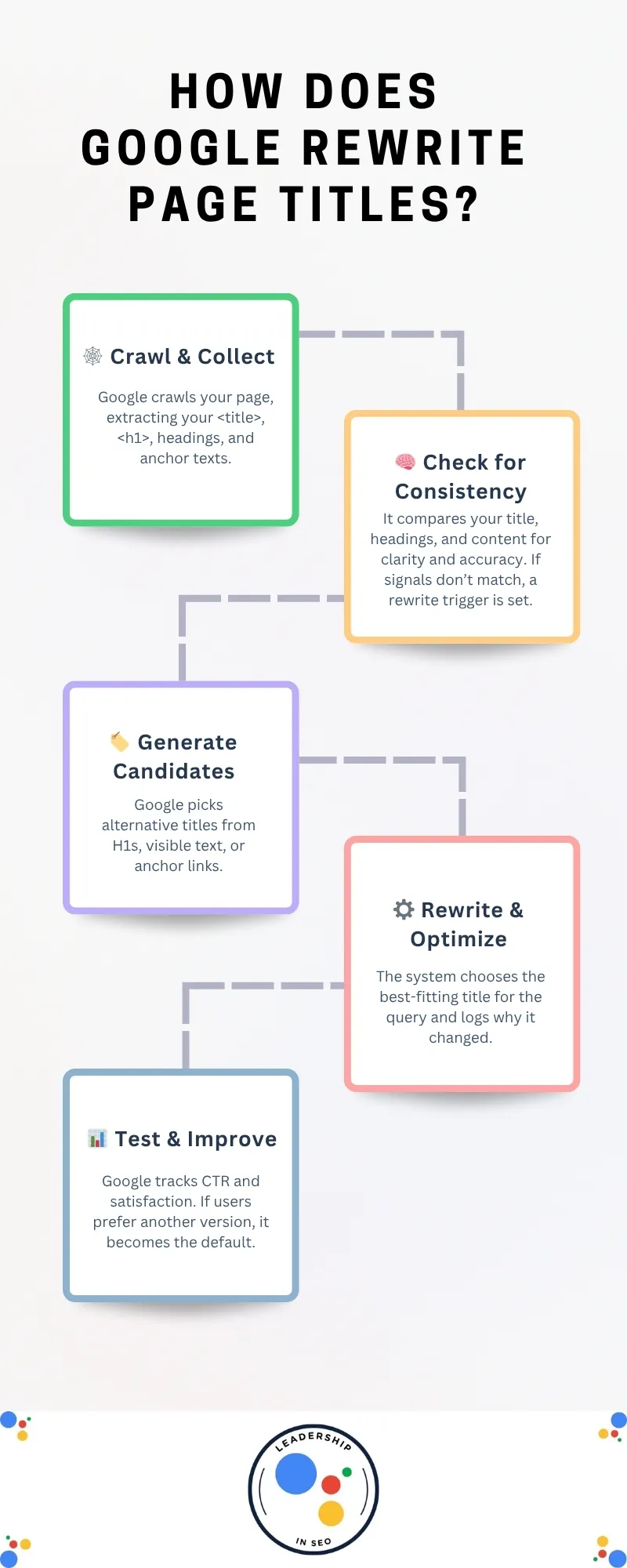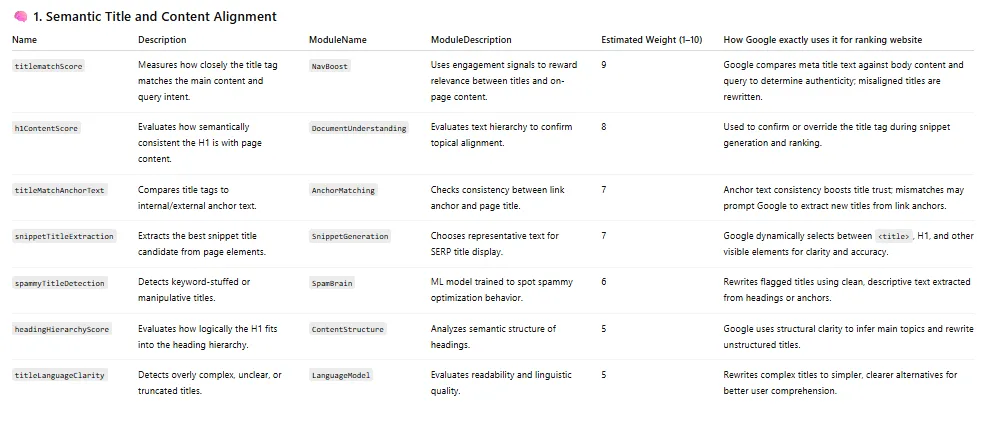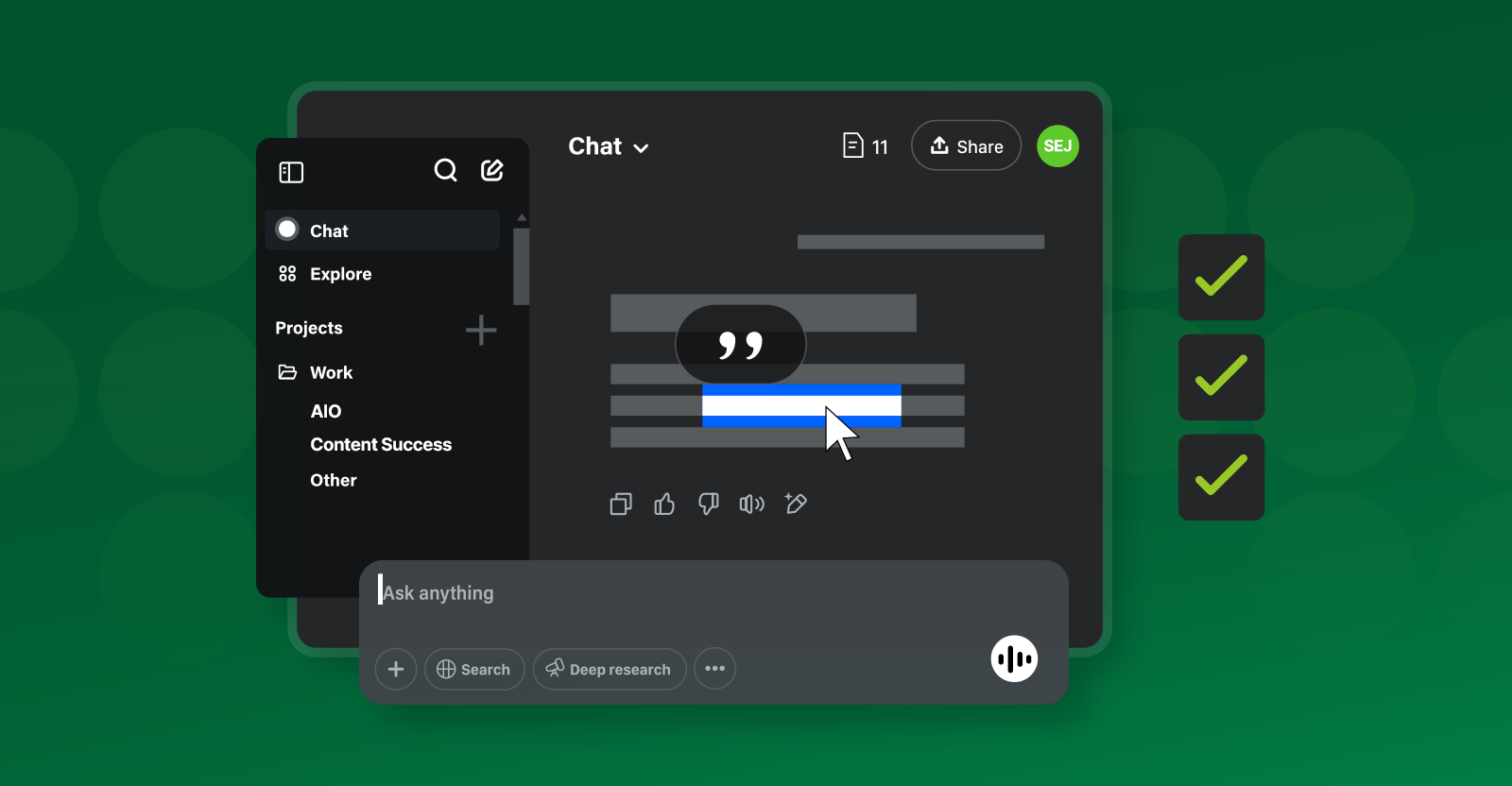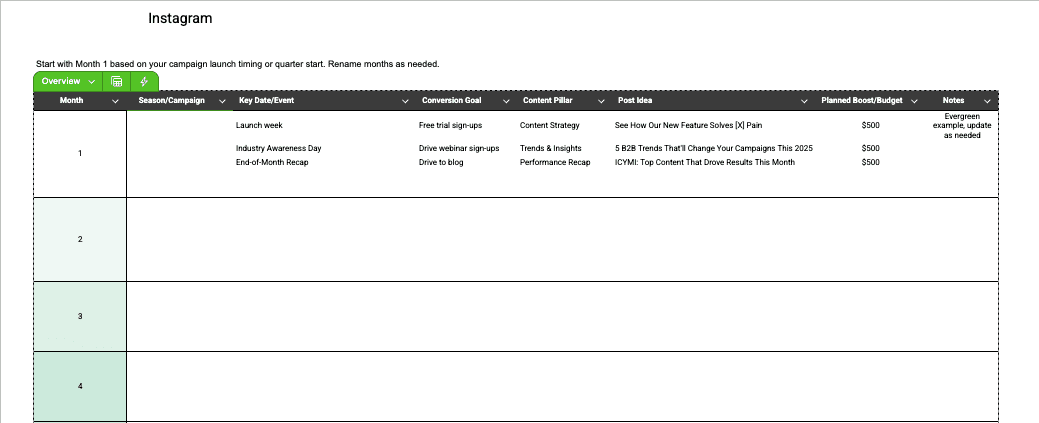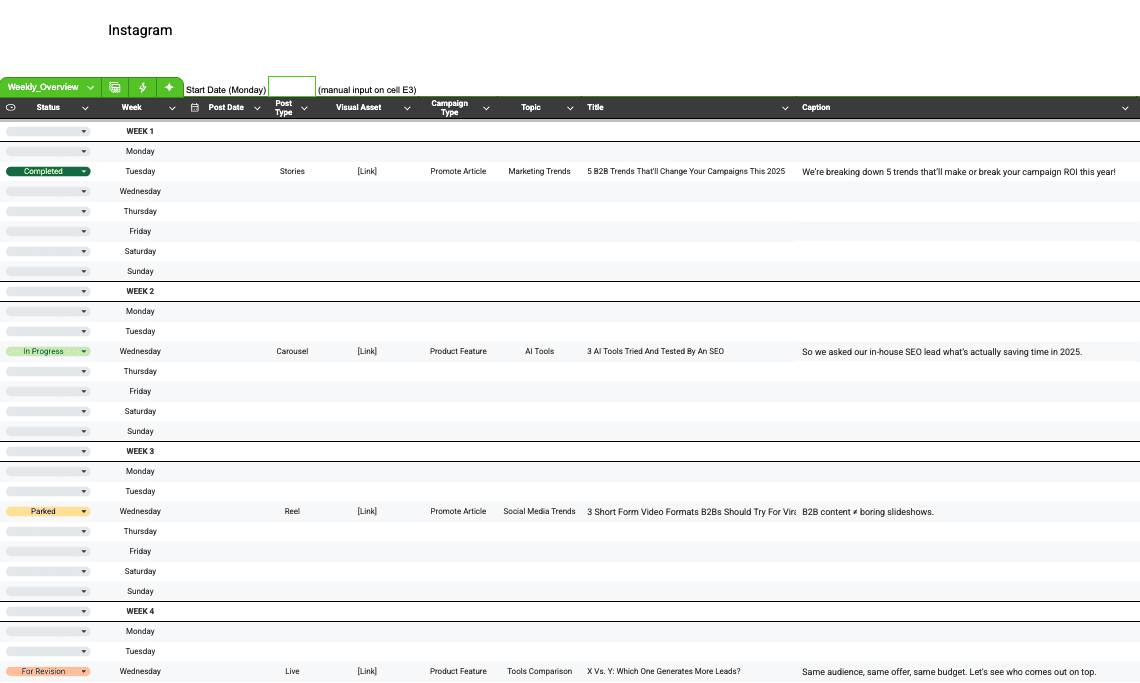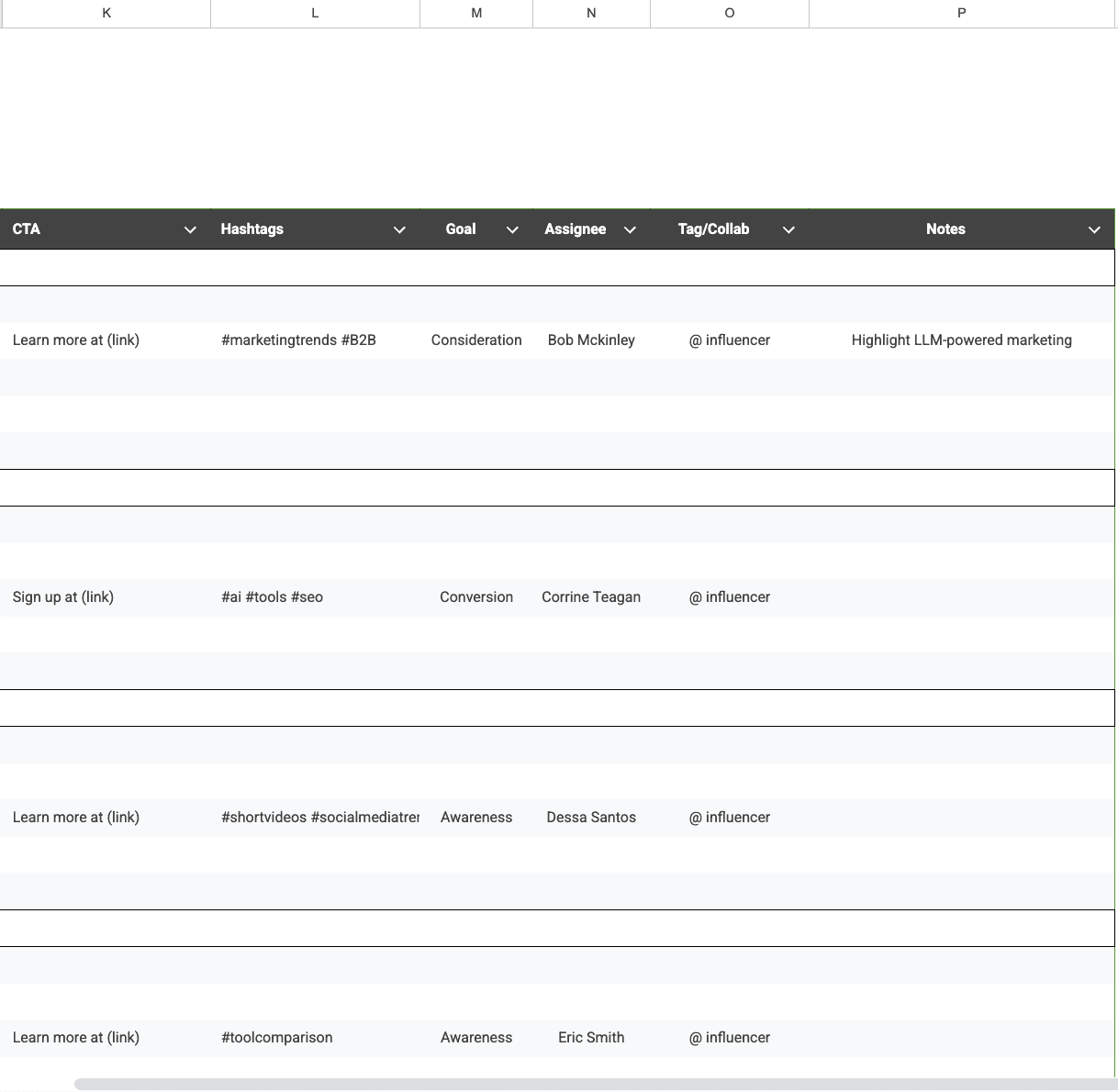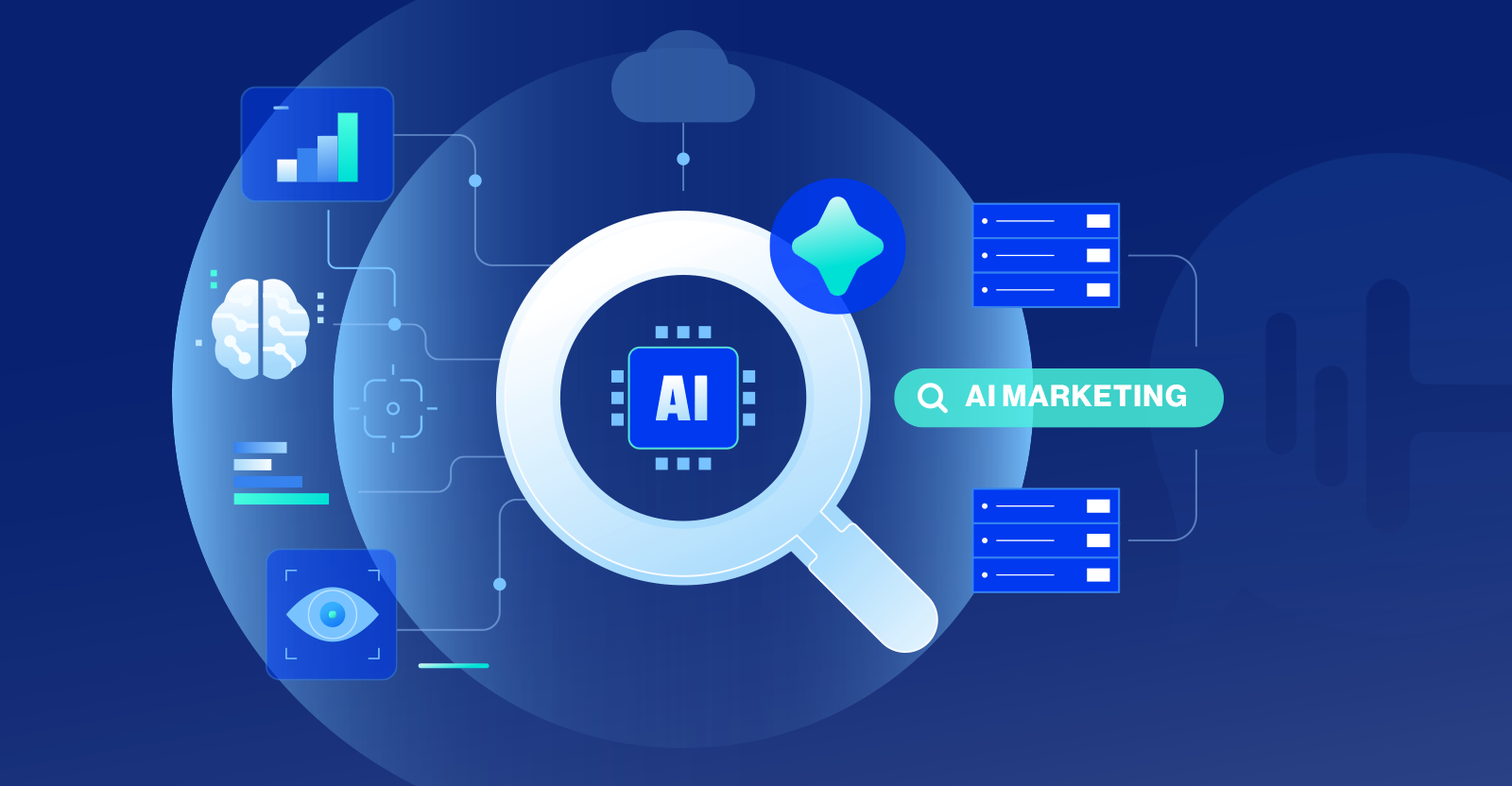Why AI Content All Sounds the Same & How SEO Pros Can Fix It via @sejournal, @mktbrew
This post was sponsored by Market Brew. The opinions expressed in this article are the sponsor’s own.
If your AI-generated articles don’t rank but sound fine, you’re not alone.
AI has made it effortless to produce content, but not to stand out in SERPs.
Across nearly every industry, brands are using generative AI tools like ChatGPT, Perplexity, Claude, and more to scale content production, only to discover that, to search engines, everything sounds the same.
But this guide will help you build E-E-A-T-friendly & AI-Overview-worthy content that boosts your AI Overview visibility, while giving you more control over your rankings.
Why Does All AI-Generated Content Sound The Same?
Most generative AI models write from the same training data, producing statistically “average” answers to predictable prompts.
The result is fluent, on-topic copy that is seen as interchangeable from one brand to the next.
To most readers, it may feel novel.
To search engines, your AI content may look redundant.
Algorithms can now detect when pages express the same ideas with minor wording differences. Those pages compete for the same meaning, and only one tends to win.
The challenge for SEOs isn’t writing faster, it’s writing differently.
That starts with understanding why search engines can tell the difference even when humans can’t.
How Do Search Engines & Answer Engines See My Content?
Here’s what Google actually sees when it looks at your page:
- Search engines no longer evaluate content by surface keywords.
- They map meaning.
Modern ranking systems translate your content into embeddings.
When two pages share nearly identical embeddings, the algorithm treats them as duplicates of meaning, similar to duplicate content.
That’s why AI-generated content blends together. The vocabulary may change, but the structure and message remain the same.
What Do Answer Engines Look For On Web Pages?
Beyond words, engines analyze the entire ecosystem of a page:
These structural cues help determine whether content is contextually distinct or just another derivative variant.
To stand out, SEOs have to shape the context that guides the model before it writes.
That’s where the Inspiration Stage comes in.
How To Teach AI To Write Like Your Brand, Not The Internet
Before you generate another article, feed the AI your brand’s DNA.
Language models can complete sentences, but can’t represent your brand, structure, or positioning unless you teach them.
Advanced teams solve this through context engineering, defining who the AI is writing for and how that content should behave in search.
The Inspiration Stage should combine three elements that together create brand-unique outputs.
Step 1 – Create A Brand Bible: Define Who You Are
The first step is identity.
A Brand Bible translates your company’s tone, values, and vocabulary into structured guidance the AI can reference. It tells the model how to express authority, empathy, or playfulness. And just as important, what NOT to say.
Without it, every post sounds like a tech press release.
With it, you get language that feels recognizably yours, even when produced at scale.
“The Brand Bible isn’t decoration: it’s a defensive wall against generic AI sameness.”
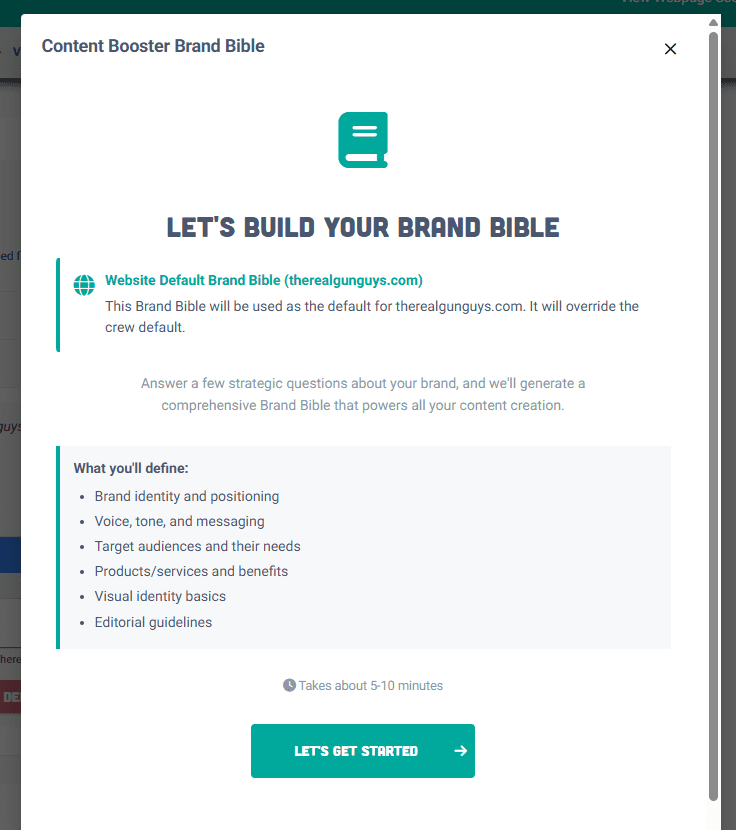 A great example: Market Brew’s Brand Bible Wizard
A great example: Market Brew’s Brand Bible WizardStep 2 – Create A Template URL: Structure How You Write
Great writing still needs great scaffolding.
By supplying a Template URL, a page whose structure already performs well, you give the model a layout to emulate: heading hierarchy, schema markup, internal link positions, and content rhythm.
Adding a Template Influence parameter can help the AI decide how closely to follow that structure. Lower settings would encourage creative variation; higher settings would preserve proven formatting for consistency across hundreds of pages.
Templates essentially become repeatable frameworks for ranking success.
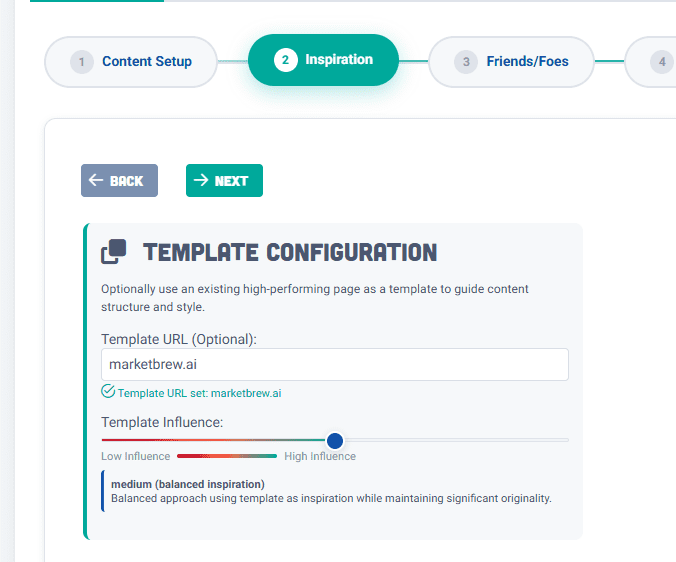


Step 3 – Reverse-Engineer Your Competitor Fan-Out Prompts: Know the Landscape
Context also means competition. When you are creating AI content, it needs to be optimized for a series of keywords and prompts.
Fan-out prompts are a concept that maps the broader semantic territory around a keyword or topic. These are a network of related questions, entities, and themes that appear across the SERP.
In addition, fan-out prompts should be reverse-engineered from top competitors in that SERP.
Feeding this intelligence into the AI ensures your content strategically expands its coverage; something that the LLM search engines are hungry for.
“It’s not copying competitors, it’s reverse-engineering the structure of authority.”
Together, these three inputs create a contextual blueprint that transforms AI from a text generator into a brand and industry-aware author.
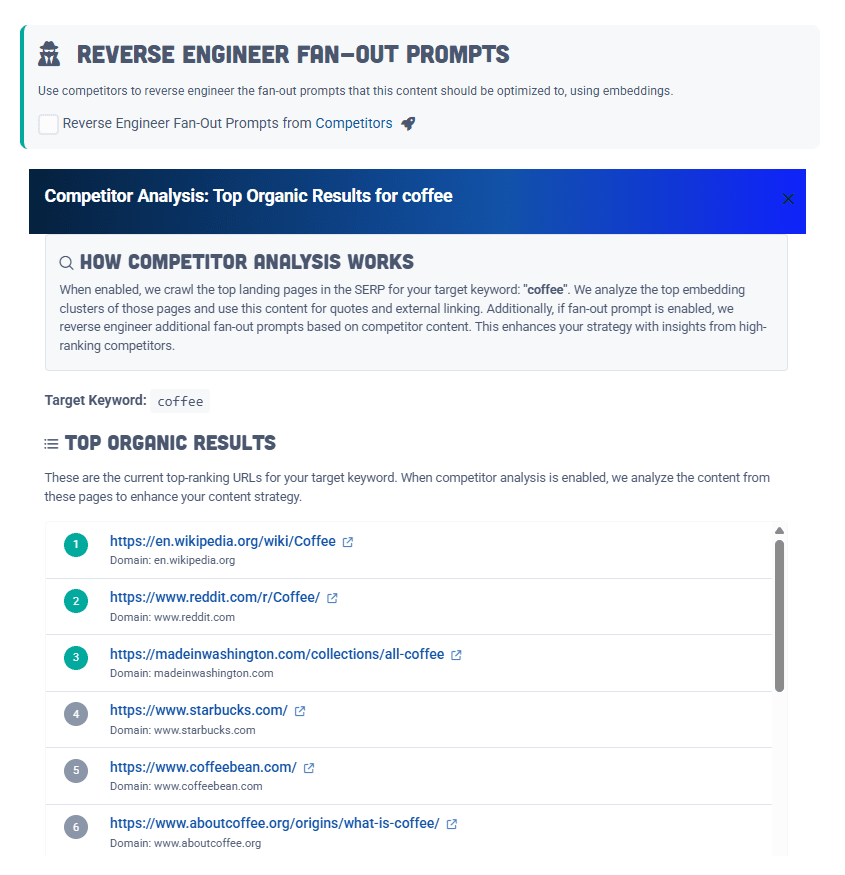


How To Incorporate Human-Touch Into AI Content
If your AI tool spits out finished drafts with no checkpoints, you’ve lost control of what high-quality content is.
That’s a problem for teams who need to verify accuracy, tone, or compliance.
Breaking generation into transparent stages solves this.
Incorporate checkpoints where humans can review, edit, or re-queue the content at each stage:
- Research.
- Outline.
- Draft.
- Refinement.
Metrics for readability, link balance, and brand tone become visible in real time.
This “human-in-the-loop” design keeps creative control where it belongs.
Instead of replacing editors, AI becomes their analytical assistant: showing how each change affects the structure beneath the words.
“The best AI systems don’t replace editors, they give them x-ray vision into every step of the process.”
How To Build Content The Way Search Engines Read It
Modern SEO focuses on predictive quality signals: indicators that content is likely to perform before it ever ranks.
These include:
- Semantic alignment: how closely the page’s embeddings match target intent clusters.
- Structural integrity: whether headings, schema, and links follow proven ranking frameworks.
- Brand consistency and clarity: tone and terminology that match the brand bible without losing readability.
Tracking these signals during creation turns optimization into a real-time discipline.
Teams can refine strategy based on measurable structure, not just traffic graphs weeks later.
That’s the essence of predictive SEO: understanding success before the SERP reflects it.
The Easy Way To Create High-Visibility Content For Modern SERPs
Top SEO teams are already using the Content Booster approach.
Market Brew’s Content Booster is one such example.
It embeds AI writing directly within a search engine simulation, using the same mechanics that evaluate pages to guide creation.
Writers begin by loading their Brand Bible, selecting a Template URL, and enabling reverse-engineered fan-out prompts.
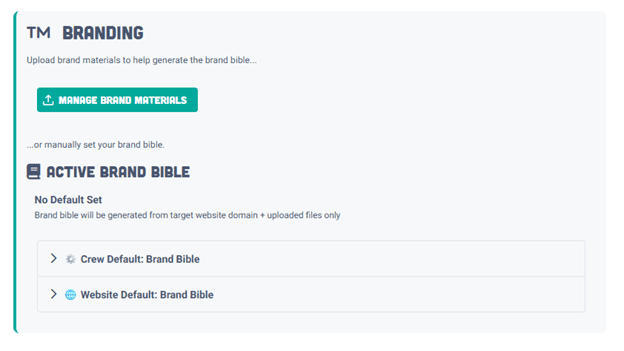


Next, the internal and external linking strategy is defined, which uses a search engine model’s link scoring system, plus its entity-based text classifier as a guide to place the most valuable links possible.
This is bolstered by a “friends/foes” section that allows writers to define quoting / linking opportunities to friendly sites, and “foe” sites where external linking should be avoided.
The Content Booster then produces and evaluates a 7-stage content pipeline, each driven by thousands of AI agents.
| Stage | Function | What You Get |
| 0. Brand Bible | Upload your brand assets and site; Market Brew learns your tone, voice, and banned terms. | Every piece written in your unique brand style. |
| 1. Opportunity & Strategy | Define your target keyword or prompt, tone, audience, and linking strategy. | A strategic blueprint tied to real search intent. |
| 2. Brief & Structure | Creates an SEO-optimized outline using semantic clusters and entity graphs. | Perfectly structured brief ready for generation. |
| 3. Draft Generation | AI produces content constrained by embeddings and brand parameters. | A first draft aligned with ranking behavior, not just text patterns. |
| 4. Optimization & Alignment | Uses cosine similarity and Market Brew’s ranking model to score each section. | Data-driven tuning for maximum topical alignment. |
| 5. Internal Linking & Entity Enrichment | Adds schema markup, entity tags, and smart internal links. | Optimized crawl flow and contextual authority. |
| 6. Quality & Compliance | Checks grammar, plagiarism, accessibility, and brand voice. | Ready-to-publish content that meets editorial and SEO standards. |
Editors can inspect or refine content at any stage, ensuring human direction without losing automation.
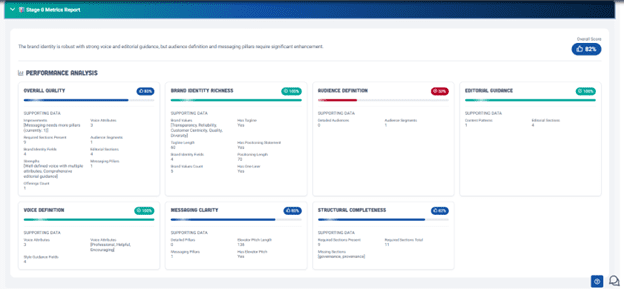


Instead of waiting months to measure results, teams see predictive metrics: like fan-out coverage, audience/persona compliance, semantic similarity, link distribution, embedding clusters and more. The moment a draft is generated.
This isn’t about outsourcing creativity.
It’s about giving SEO professionals the same visibility and control that search engineers already have.
Your Next Steps
If you teach your AI to think like your best strategist, sameness stops being a problem.
Every brand now has access to the same linguistic engine; the only differentiator is context.
The future of SEO belongs to those who blend human creativity with algorithmic understanding, who teach their models to think like search engines while sounding unmistakably human.
By anchoring AI in brand, structure, and competition, and by measuring predictive quality instead of reactive outcomes, SEOs can finally close the gap between what we publish and what algorithms reward.
“The era of AI sameness is already here. The brands that thrive will be the ones that teach their AI to sound human and think like a search engine.”
Ready to see how predictive SEO works in action?
Explore the free trial of Market Brew’s Light Brew system — where you can model how search engines interpret your content and test AI writing workflows before publishing.
Image Credits
Featured Image: Image by Market Brew. Used with permission.


